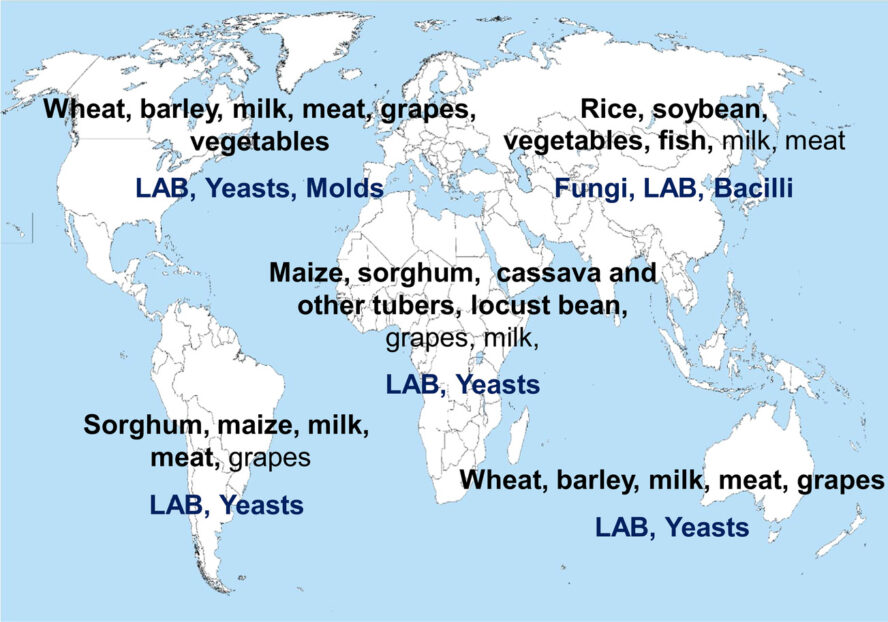It’s fun to consider how our eating habits have changed over time. When I was in college, I was aware of only a few fermented foods – cheese, sour cream, pickles, bread, beer, and wine. I had never heard of kimchi, kefir, or miso, and perhaps no one in America had heard of kombucha. Your generation, in contrast, has grown up with many of these foods, so I assume you are more familiar with them than I was at your age.
Of course, in other cultures, these foods had a long culinary history. Indeed, there are just as many fermented foods manufactured and consumed in Asia, the Far East, and Africa as in so-called Western regions. That these foods are now being studied reflects the global interest in fermented foods, for their organoleptic as well as nutritional properties.
A few years ago, I was part of an expert panel consisting of scientists from Europe, Asia, and North America that reviewed the microbiological differences and similarities of fermented foods from around the world. Remarkably, the bacteria, yeasts, and molds responsible for fermentation are similar no matter the food or the location. This suggests that these microbes are very well adapted to particular food environments and also accounts for why even spontaneously fermented foods consistently turn out just fine.
The review was published in Comprehensive Reviews in Food Science and Food Safety. If you review the tables, you will see a lot of fermented foods listed that were definitely new to me. How many of these so-called non-Western foods do you recognize?

